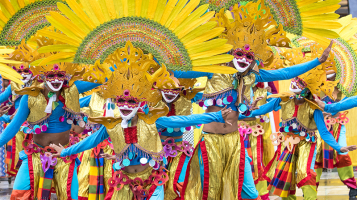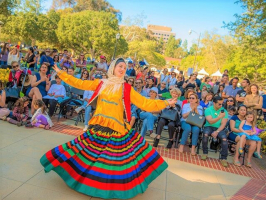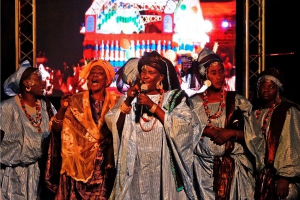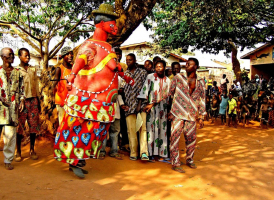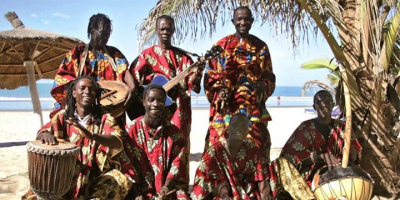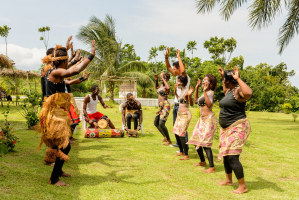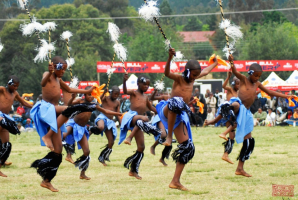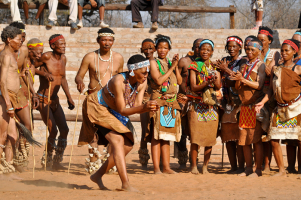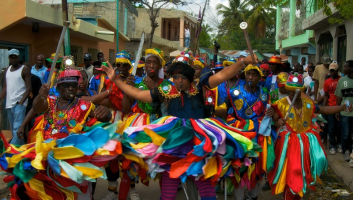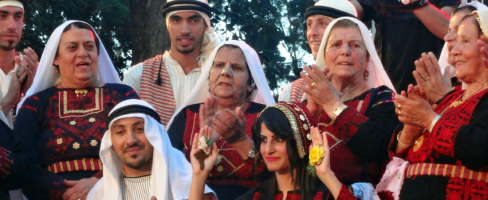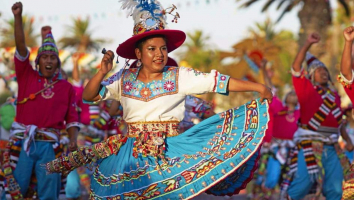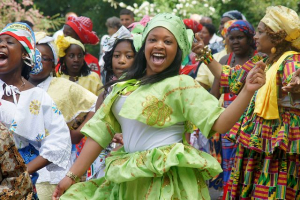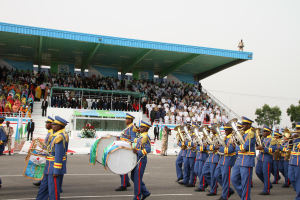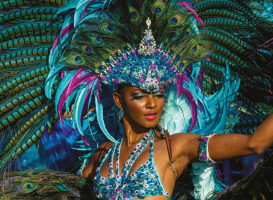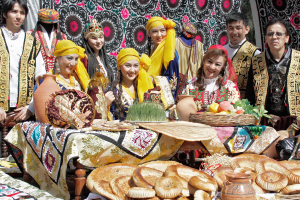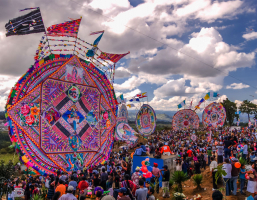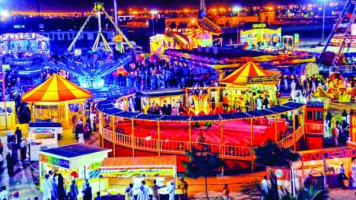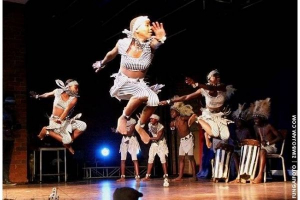Top 14 Most Famous Festivals in Singapore
Singapore is a country where the "east meets west". The culture of Lion City is diverse, encompassing both Asian and European influences. Singapore has many ... read more...areas that are divided by ethnicities, such as Little India and Chinatown. Singapore has four official languages because its culture is so diverse. Because it is a peaceful country, it has attracted a large number of immigrants over the years due to its complete respect for human rights and equality. As a result, there is no doubt that many festivals in Singapore are celebrated with zest and zeal. Here are the 14 most famous festivals in Singapore that are widely celebrated.
-
Pongal is a four-day period festival that is widely celebrated in Southern India. The Indians in Singapore also celebrate it grandly at the start of the auspicious Thai month. This festival is held to express gratitude to Surya, the sun god, for the harvest and the riches of life. During Pongal, Little India comes alive with a variety of events and competitions. During this festival in Singapore, people also exchanged gifts and dressed in new clothes.
The beginning of a Tamilian extravaganza is marked by rejoicing over a bountiful harvest and thanking the Sun god for his blessings. Every year, Tamilians celebrate Pongal during the tenth month of the Tamil calendar, which falls around mid-January. It is one of the most celebrated festivals in Singapore, owing to the country's sizable Tamilian population.
People get rid of their old belongings and celebrate new beginnings. Furthermore, the beginning of this auspicious Pongal festival is marked by a large celebration involving thanksgiving ceremonies and cooking a smorgasbord of cuisines. Pongal is celebrated in Singapore for four days. Head down to Singapore to celebrate these festivals and become engulfed in the vibrant colors of the festivities.
Takes place: from January 14 to January 17
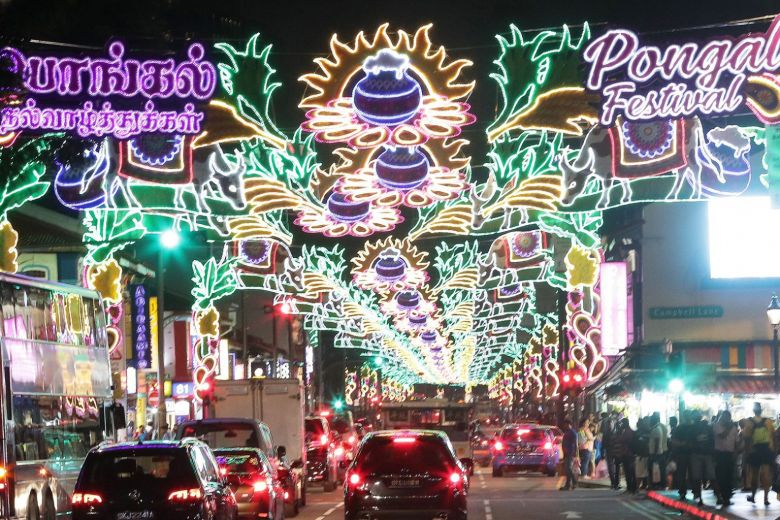
twitter.com 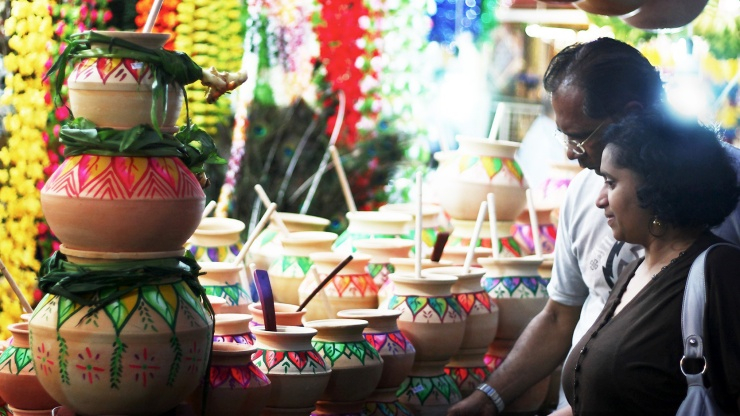
visitsingapore.com -
In Singapore, the first day of Chinese New Year, also known as the Spring Festival, falls on a new moon day. The Lunar New Year (as it is also known) is very important to the Chinese, who clean their homes to get rid of bad or ill-fortune and make room for good luck. The celebration of this grand festival in Singapore lasts 14 days, beginning on New Year's Eve. During this time, Chinese residents visit their families and decorate their homes in red and gold. They also exchange gifts and give Hong Bao to children (red envelopes). The celebration of festivities brings Chinatown to life. As part of the celebration, lion and dragon dances were performed.
People flock to Chinatown to see the famous street light up, as well as performances by lion dancers and fire eaters. The Chingay Parade, Singapore's version of carnival, is not to be missed.
Takes place: continues for 14 days starting on the eve of the New Year
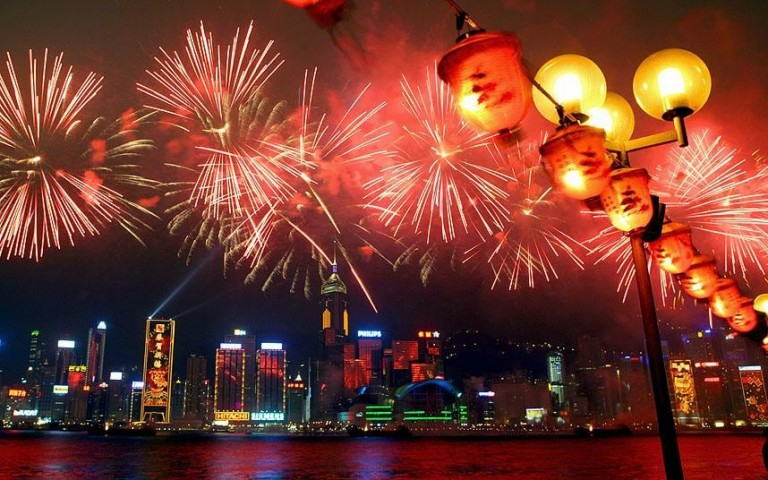
apsuperyacht.org 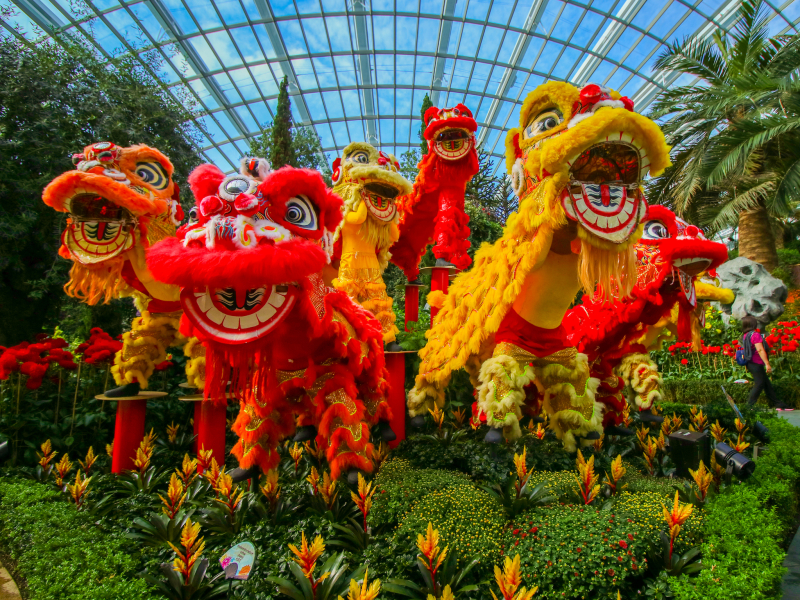
timeout.com -
Singapore has a diverse ethnic population, including Hindu Tamilians and others. Thaipusam is one of Singapore's most important festivals, with thousands of Hindu devotees thanking Lord Murugan for his blessings and gifts. Thai is a Tamil month, and Pusam is the name of a star. Pusam star is at its highest point in the sky during the Thai month. As a result, the Thaipusam festival is held on full moon day.
Did you know that preparations begin a month before the festival, with all devotees adhering to a strictly vegetarian diet? A long procession is held in which devotees carry Kavadi while having their bodies pierced. They regard this as a ritual sacrifice for Lord Murugan. Kavadi is also ornately decorated with colors and flowers. During this Singapore festival, all of this is accompanied by the sound of traditional drums and foot tapping beats.
Takes place: on the full moon day in the Tamil month
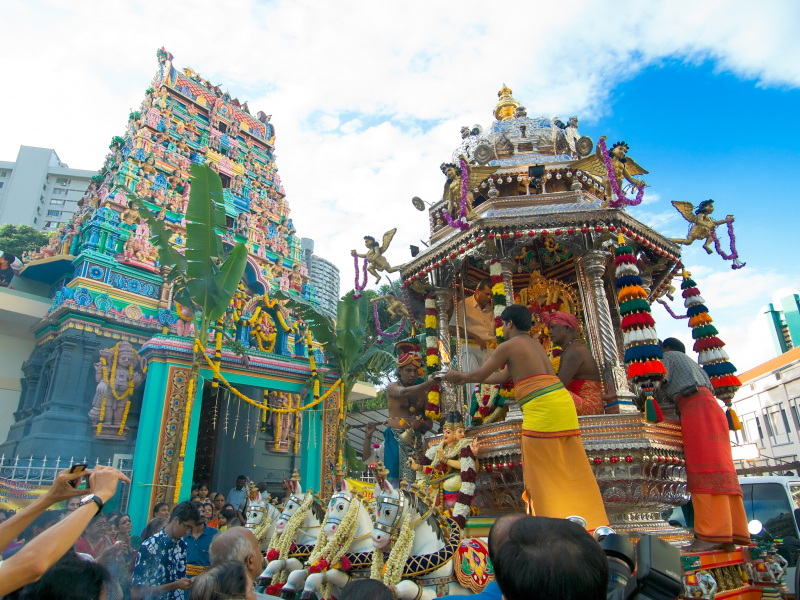
timeout.com 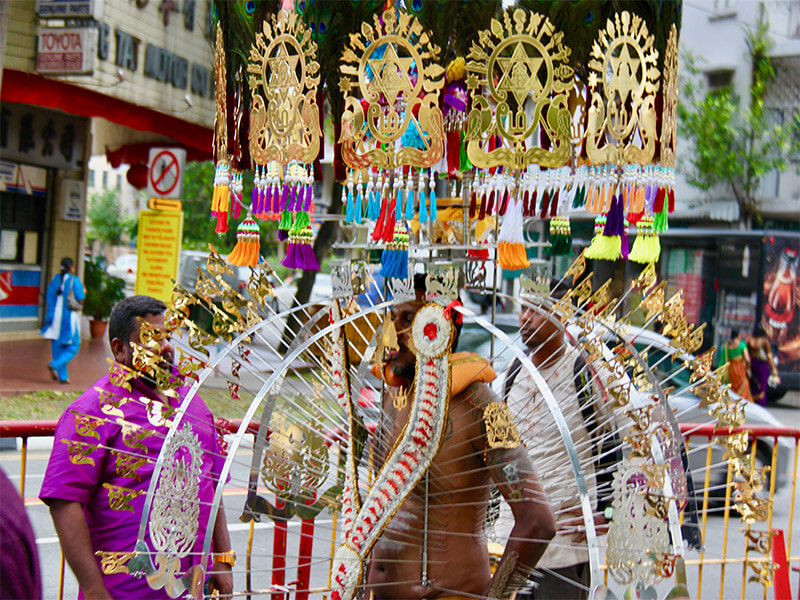
expatliving.sg -
The Lantern Festival, also known as the Spring Lantern Festival, is one of the most famous festivals in Singapore. It is the last day of the Chinese New Year celebrations (the 15th day).
On this day, the children carry paper lanterns outside, light them, and release them into the sky. Some paper lanterns are simple and traditional, while others come in a variety of shapes and sizes. During the Lantern Festival, children go out at night with paper lanterns in hand, solving riddles on the lanterns. Lanterns were fairly simple in ancient times, and only the emperor and noblemen had large ornate ones. Lanterns have been embellished with many intricate designs in modern times. For example, animal-shaped lanterns are now popular. The lanterns may represent people letting go of their previous selves and acquiring new ones, which they will discard the following year. To represent good fortune, the lanterns are almost always red.
Takes place: on the last day of the Chinese New Year celebrations (the 15th day)
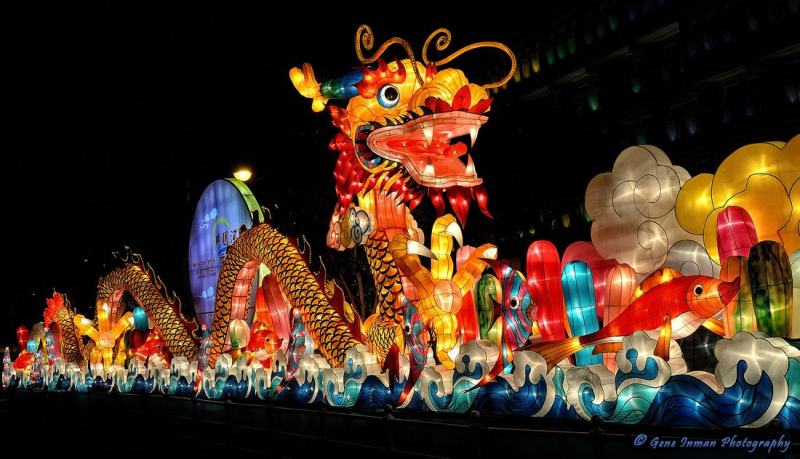
pinterest.com 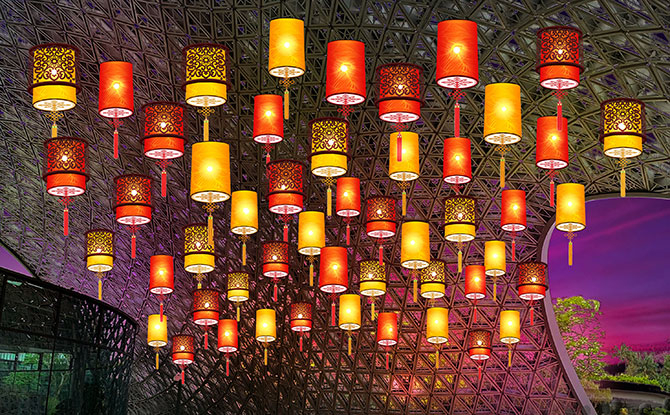
littledayout.com -
Buddhism adherents around the world commemorate Vesak Day. It commemorates Buddha's enlightenment and death. In Theravada, Tibetan Buddhism, and Navayana, the festival commemorates Gautama Buddha's birth, enlightenment (Nibbāna), and death (Parinirvāna).
In the East Asian tradition, the Buddha's birthday is typically celebrated around the traditional timing of Vesak, while the Buddha's awakening and passing away are celebrated separately as Bodhi Day and Nibbāna Day, which occur at different times in the calendar. Vesak is celebrated on the full moon day of the Vaisakha month in South Asian tradition, and it commemorates the Buddha's birth, enlightenment, and ultimate passing away. The month of May usually has one full moon, but because there are 29.5 days between full moons, there are occasionally two. Singapore celebrates the holiday on the second full moon if there are two full moons in May.
On Vesak, devout Buddhists and followers gather in temples before dawn for the ceremonial and honorable hoisting of the Buddhist flag and the singing of hymns in praise of the holy triple gem: The Buddha, The Dharma (his teachings), and The Sangha (his disciples). Devotees may bring simple offerings of flowers, candles, and joss sticks to place at their teacher's feet. These symbolic offerings are meant to remind followers that, just as the beautiful flowers wither after a short time and the candles and joss-sticks burn out, so is life subject to decay and destruction. Devotees are urged to make a concerted effort to avoid all forms of violence. They are encouraged to eat only vegetarian food for the entire day. In some countries, such as Sri Lanka, two days are set aside for Vesak celebrations, during which all liquor stores and slaughterhouses are closed by government decree.
Thousands of birds, insects, and animals are also released in what is known as life release to provide freedom to those who are held captive, imprisoned, or tortured against their will. (However, the practice is prohibited in some countries, such as Singapore, because the released animals are unable to survive long-term or may have a negative impact on the local ecosystem if they do). Some devout Buddhists will dress in simple white clothing and spend the entire day in temples renewing their commitment to the eight precepts.
Takes place: Full moon of the lunar month of Vesākha, usually in April, May or June.
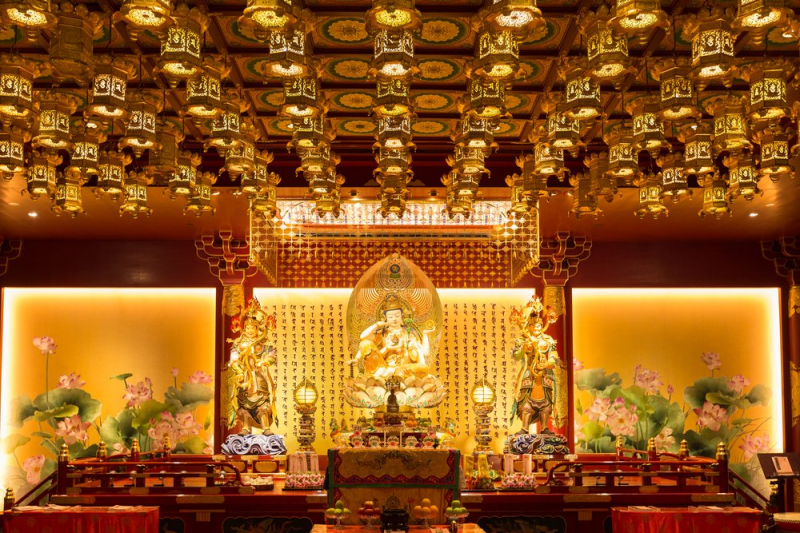
blog.giftbasketsoverseas.com 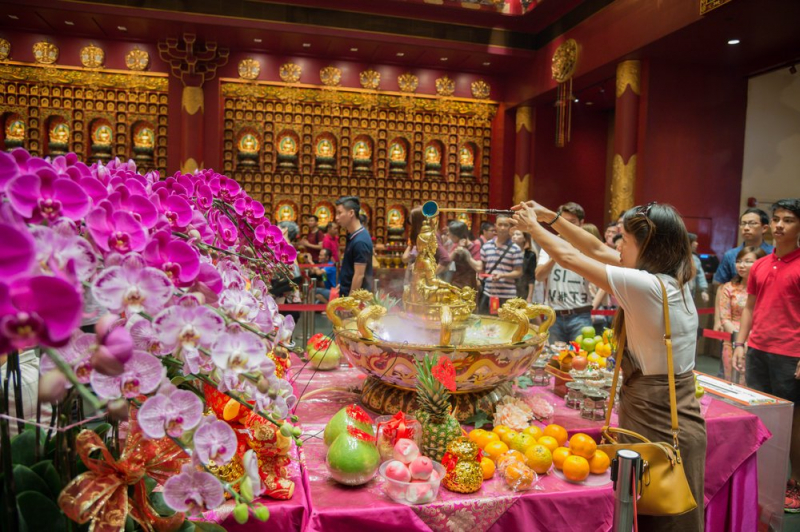
blog.giftbasketsoverseas.com -
The Dragon Boat Festival (also known as the Duanwu Festival or the Zhongxao Festival) is a Chinese cultural festival that dates back thousands of years. Because it falls on the fifth day of the fifth month of the Chinese calendar, the festival is also known as the Double Fifth Festival. During this festival, dragon boats compete in races all over the world, including in Singapore, where Chinese communities are present. The Chinese communities of Southeast Asia, including Singapore and Malaysia, observe the Dragon Boat Festival on an unofficial basis. Korean Dano, Japanese Children's Day, and Vietnamese Tết Đoan Ngọ are all equivalent and related to official festivals.
Eating (and preparing) zongzi, drinking realgar wine, and racing dragon boats are three of the most popular activities during the Dragon Boat Festival.
Dragon boat racing has a rich history of ancient ceremonial and ritualistic traditions that began more than 2500 years ago in southern central China. The legend begins with the story of Qu Yuan, a minister in one of the Warring State governments known as the Chu. He was vilified by envious government officials and exiled by the king. He drowned himself in the Miluo River after being dissatisfied with the Chu monarch. The general public rushed to the water and attempted to recover his body. People hold dragon boat races every year on the anniversary of Qu Yuan's death, according to legend. They also threw rice into the water to keep the fish from eating Qu Yuan's body, which is one of the origins of zongzi.
Making and eating zongzi with family and friends is an important part of Dragon Boat Festival celebrations. People traditionally wrap zongzi in reed and bamboo leaves, forming a pyramid shape. The leaves also impart a distinct aroma and flavor to the sticky rice and fillings. The types of fillings available vary by region.
Realgar wine, also known as Xiong Huang wine, is a Chinese alcoholic beverage made from Chinese yellow wine and powdered realgar, a yellow-orange arsenic sulfide mineral known as "rice wine." During the hot summers, it is frequently used as a pesticide against mosquitoes and other biting insects, as well as a common antidote to the poison in ancient Asia.
Takes place: the end of May to the first two weeks of June on the English calendar
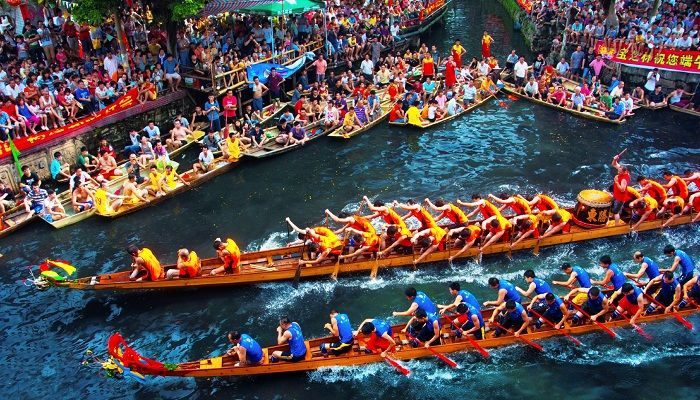
pinterest.com 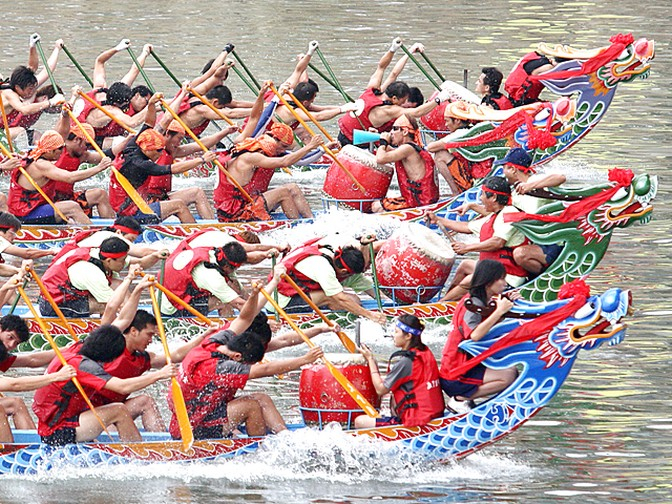
sites.google.com -
The next one in the most famous festivals in Singapore that Toplist would like to introduce to you is Hari Raya Puasa. Hari Raya Puasa marks the end of Ramadan, the Muslim month of fasting. Hari Raya Puasa translates as "The day of Celebration." During this Singapore festival, people visit mosques and then graveyards (to greet any family that passed away). They celebrate by dressing up and visiting their families, as well as reciting takbir in mosques in the evening. Oil lamps are also turned on. The festival represents an individual's purification and renewal.
The end of Ramzan is a time to celebrate and rejoice in Allah's love. Hari Raya Puasa is one of the most important Muslim festivals in Singapore. Hari Raya Puasa is Singapore's most well-known festival commemorating the Sparkle of lights. This is one of Singapore's best light festivals. Their homes are lit from the 20th of Ramzan until the day of Hari Raya Puasa. Furthermore, it is a time of celebration, and people regard it as the day that brings them positivity and goodness.
Takes place: May or June
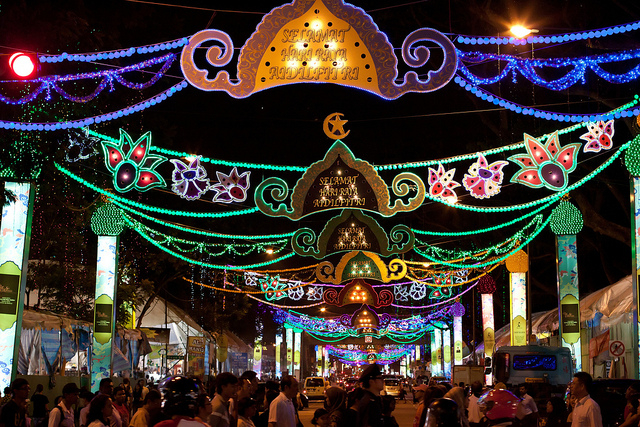
https://simsodepabc.com/ 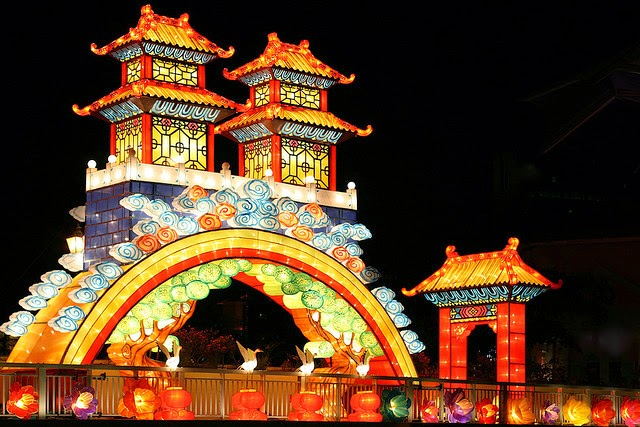
https://simsodepabc.com/ -
Singapore National Day is observed every year on August 9 to commemorate the country's independence from Malaysia in 1965. This holiday includes a National Day Parade, an address by Singapore's Prime Minister, and fireworks displays.
The Singapore National Day Parade is a national ceremony held at The Float @ Marina Bay, the National Stadium at the Singapore Sports Hub, or the Padang. For the first time, the Parade was held at The Float @ Marina Bay in 2007, and in 2016, it was held at the Singapore Sports Hub. The parade features performances based on the year's theme.
Since 1966, the National Day Message has been an annual tradition. The Prime Minister of Singapore "examines domestic and global developments, reviews economic performance and outlook, and outlines national priorities and government plans as he inspires Singaporeans to move forward with a unified sense of purpose" in each year's recorded message.
The Prime Minister of Singapore delivers an annual address to the nation on the second or third Sunday after National Day, known as the National Day Rally. Since 1966, the Prime Minister has used this rally to address the nation on its key challenges and future directions, similar to the President of the United States' State of the Union Address. Prior to 2005, the rally consisted of a continuous speech beginning at 8 p.m. Since 2005, the Malay and Chinese versions have been delivered at 6.45 p.m., with a 7.30 p.m. break, while the English version has been delivered at 8 p.m. Since 2007, opposition MPs have been invited to the rally.
Fireworks displays are also part of the National Day celebrations. They feature a number of local and international teams that launch fireworks displays on various nights. The Singapore Fireworks Festival was first held in 2004 at Marina Bay and was organized by Unusual Productions. Over the last three years, the amount of fireworks used has increased dramatically, from 4,000 rounds in 2004 to over 9,000 in 2006. During the 2012 Fourth of July celebrations, a Mentos commercial encouraged procreation.
Takes place: August 9
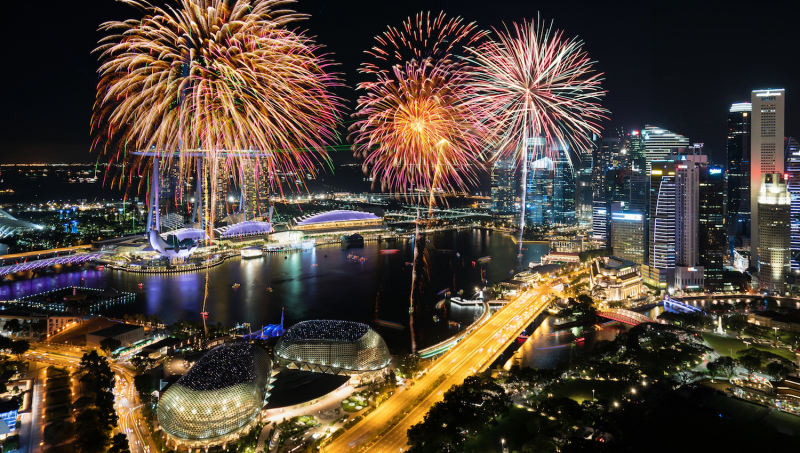
timeout.com 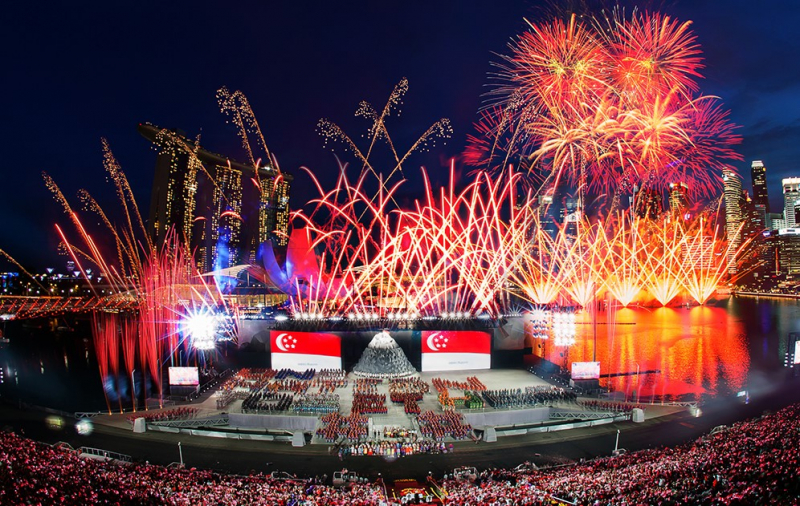
vulcanpost.com -
Deepavali, one of India's most important festivals, is also celebrated in Singapore. As light triumphs over darkness, Singapore's Little India comes to life with vibrant rangolis and fairy lights. Prior to the grand Deepavali celebrations in Singapore, families flock to the streets of Little India to shop at the many vibrant bazaars lining the beautifully lit streets.
Deepavali, also known as Diwali, is a Hindu festival that occurs each year in the month of Kartika in the Hindu calendar and is a huge celebration among Indians living in Little India. The main deity worshiped during this festival to seek prosperity and fertility is the Goddess Lakshmi.
The entire market area is decked out in bright festive lights, with the scents of floral garlands and incense wafting through the air and jewellery and clothing stores packed with customers looking to buy jewelry and traditional Indian wear. Deepavali in Singapore is not complete without taking in the music performances under the stars in Little India and getting an intricate henna tattoo. People can also be seen visiting the many coffee shops in the area and enjoying a hearty mug of Teh Tarik while watching one of Singapore's most beautiful celebrations.
Takes place: the last week of October or the first week of November
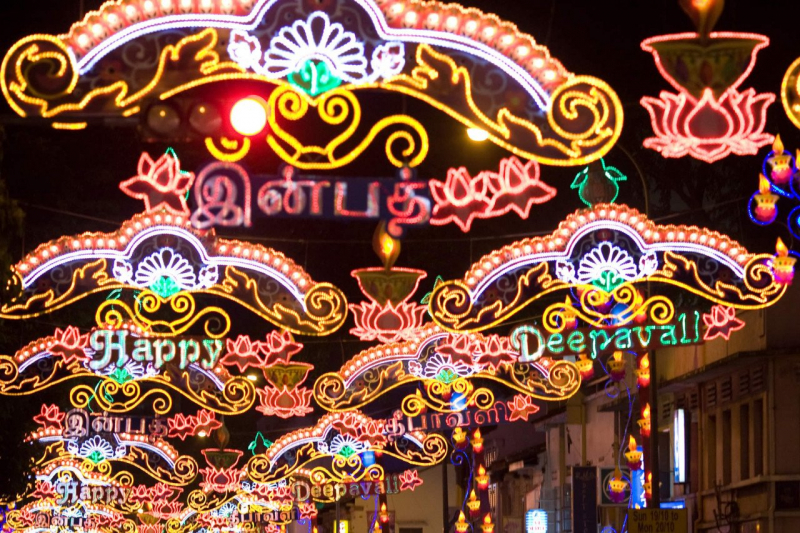
officeholidays.com 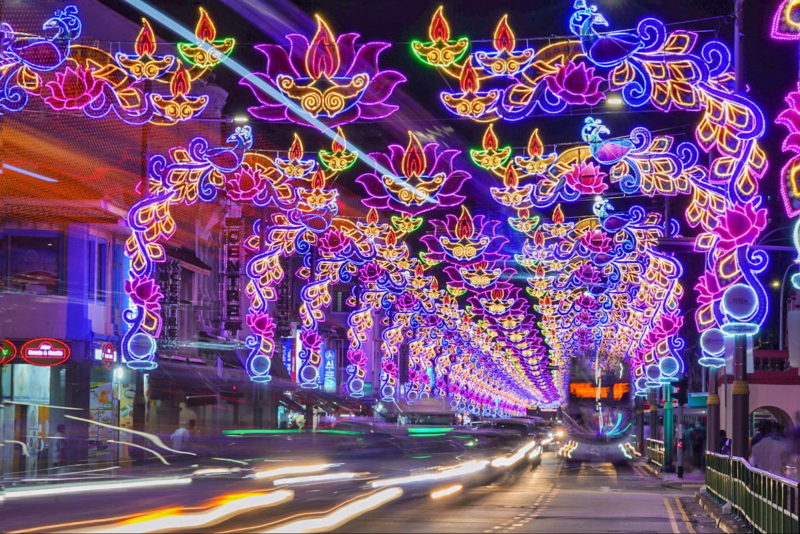
thesmartlocal.com -
To continue, Toplist would like to introduce to you Hari Raya Haji as one of the most famous festivals in Singapore. Also known as the festival of sacrifice, Hari Raya Haji is a famous Singapore festival for the commemoration of Prophet Ibrahim’s trust in God and his willingness to sacrifice his own son for him. The devout dress up and go to mosques to offer prayers and listen to sermons.
Although it is basically a celebration, cows, sheep, lambs, and goats are sacrificed for God in a ceremony known as ‘Korban’. The sacrificial animal is later cleaned and cooked to devour, which is followed by Muslims visiting each other’s place and conversing over lavish meals.
What to Experience: Join the faithful as they make the most of this spiritual festival. Visit mosques such as the Sultan Mosque, Hajjah Fatimah Mosque, and others. Spend the evenings eating with friends and family.
Takes place: on the last week of August or the first week of September
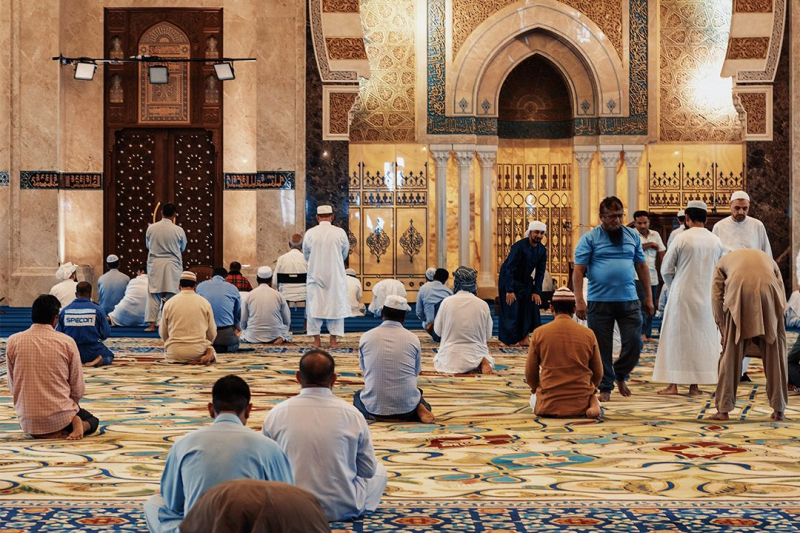
https://www.tatlerasia.com/ 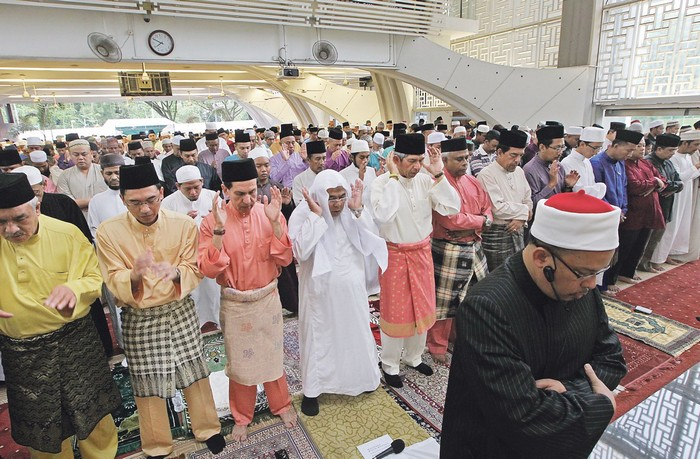
dulichvietnam.com.vn -
The Hungry Ghost Festival, held in Singapore during the seventh month of the lunar calendar, is a religiously significant festival. It is a month-long celebration during which Buddhist and Taoist devotees perform rituals and offer prayers and food to wandering spirits. During this month, the living pay their respects to the dead, and the entire Lion City comes alive with entertainment shows and traditional events.
This festival, also known as the Yulan Festival, Gui Jie, or Zhongyuan Jie, attests to the fact that the hyper-modern city is still in touch with its rituals and traditions. This festival is sure to please both devotees and curious visitors. There are numerous ways in which the Hungry Ghost Festival provides a unique experience to all visitors, from joss sticks filling the air with fragrance to papier-mâché items burning all over Chinatown. In addition, the ritualistic food offerings and entertainment shows are worth seeing. Locals follow a set of rules during this festival because there are many taboos associated with this traditional festival.
Takes place: between the last week of August and the first week of September
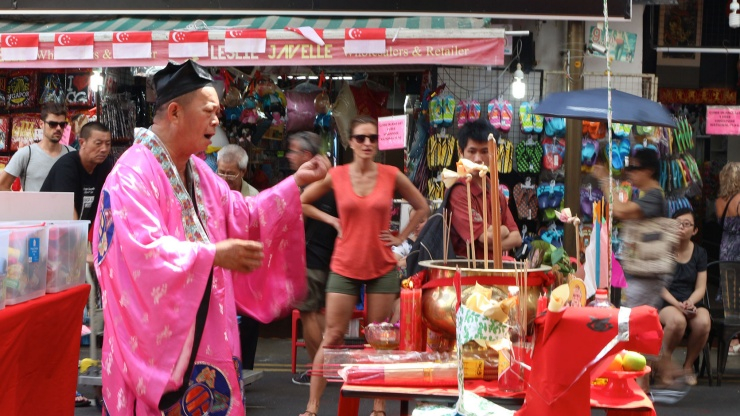
Hungry Ghost Festival 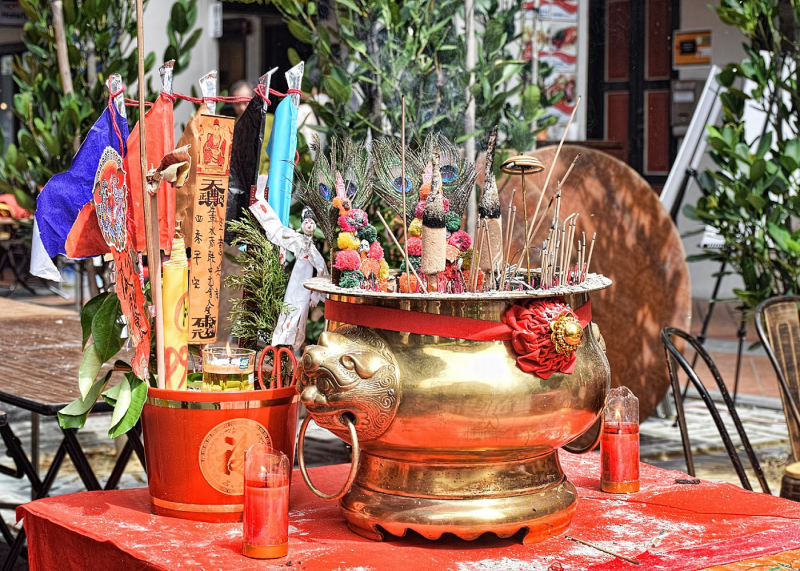
honeykidsasia.com -
The Singapore International Festival of Arts is a well-known arts festival held at the Arts House, which is transformed into the Festival House for the duration of the event. It is located at 1 Old Parliament Lane in Singapore and is a popular form of entertainment for Singaporeans from all walks of life and communities. As a result, it becomes a venue for artists from all over the world to exhibit their work and participate in discussions and workshops while interacting with the audience over a glass of wine and sumptuous food.
The Singapore International Festival of Arts (SIFA) is a grand event that people look forward to every year, with fun and frolic as its backdrop. This lavish event, formerly known as the Singapore Arts Festival, is organized and managed by Arts House Limited and funded by the National Arts Council. It is largely responsible for inspiring a wide range of audiences to use their imaginations and think critically. The events include music and dance performances, as well as theater and visual arts with members of the local community and international artists. Various programs are held at various locations throughout the city's core.
Takes place: in mid-year for a stretch of one month
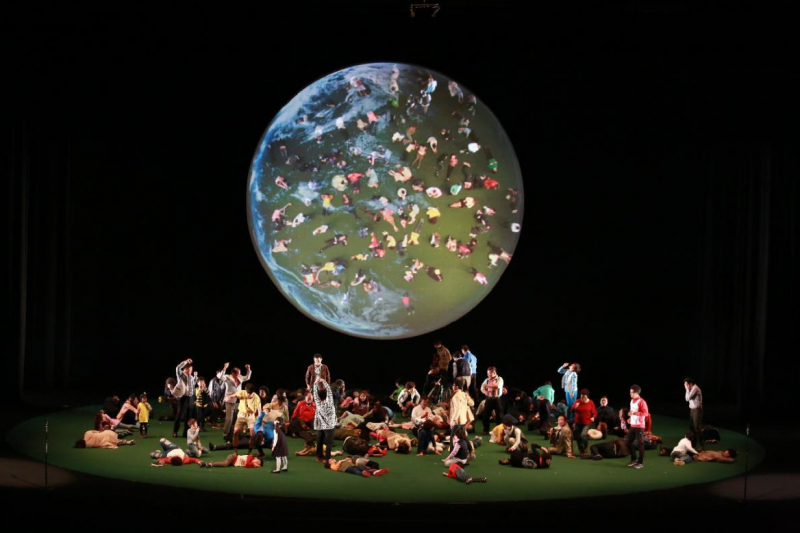
sifa.sg 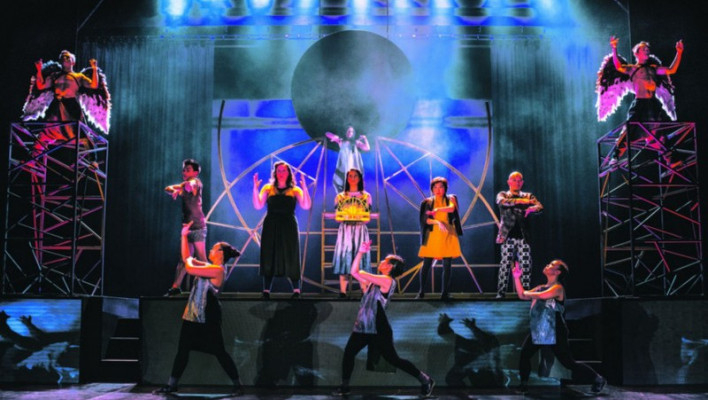
travelsingapore.info -
If you enjoy both food and travel, Singapore Food Festival may be your gastronomical escape to heavenly food at every turn. The food stall authorities definitely know how to capitalize on this opportunity and bring out the best of Singapore's passion for food, with a dizzying array of multicultural, heritage, and exploratory culinary experiences. This food festival, a perfect blend of more than a dozen delectable adventures, features traditional, contemporary, local, and international flavors. The SFF is primarily oriented toward conveying Singapore's culture and heritage and bridging the awareness gap through food, with a special emphasis on Singaporean cuisine. The food festival not only provides food but also craft workshops, cooking demonstrations, and theatrical performances.
This seventeen-day festival is lavishly celebrated. The Singapore Food Festival is divided into four sections. The modernity pillar focuses on modern and contemporary cuisine and highlights creative and trendy food innovations. The cultural pillar is dedicated to bringing out the best in Singaporean cuisine. It sheds light on Singapore's eating habits and dining culture. The art pillar celebrates home-grown, individually made culinary craftsmanship as well as their own artistic food contemplations. The last but not least pillar of tradition ignites Singapore's local heritage by re-discovering and re-introducing old, simple, and traditional methods of cooking and preparing food from raw, organic ingredients.
The Modernity Segment caters to those who have a taste for contemporary food trends and are open to food's adaptation to everyday realms of life. This segment is for those who are always up to date on the latest viral food video or the food industry's current market ruling dish. To adhere to the modernity pillar, the Accorhotels host various food fiestas. Anti-Dote, Ellenborough Market Cafe, Xperience, and Kwee Zeen, to name a few, all serve delectable dishes to satisfy your hunger.
Takes place: in July
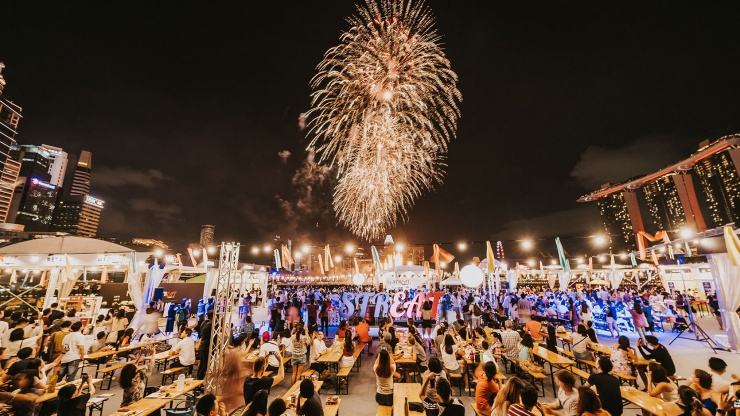
visitsingapore.com 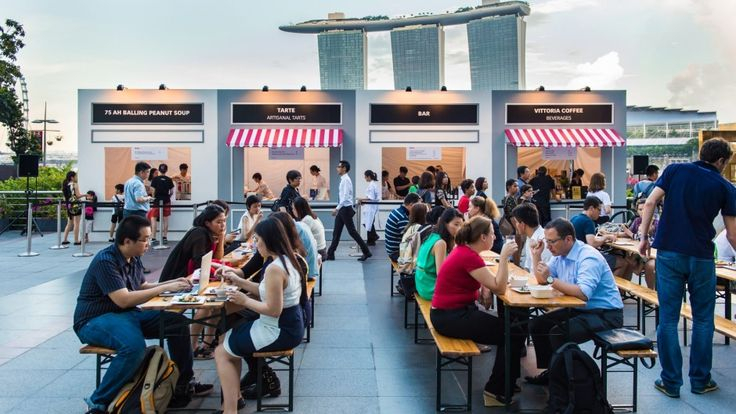
pinterest.com -
The Grand Prix Season, which takes place in September, is the ideal place to experience the thrill and rush. The fun is both on and off the beaten path. The Formula One race championship is held in the city. Following the race, there are numerous concerts and parties. Singapore Grand Prix draws a large number of island residents as well as foreign visitors! As a result, it is definitely among the most famous festivals in Singapore.
The Singapore Grand Prix is a night race held at the Marina Bay Street Circuit every year. It is a great attraction for adventure seekers, motorheads, and racers alike, as it is a part of the Formula 1 World Championship.
The Formula 1 Grand Prix Race is a great vacation spot for people of all ages because of the fantastic entertainment lineup, fairs, carnival games, food and beverage joints, and family venues. The Garden City's soaring futuristic skyline adds to the glitz of the zooming race cars as skilled racers navigate the winding track.
Takes place: September
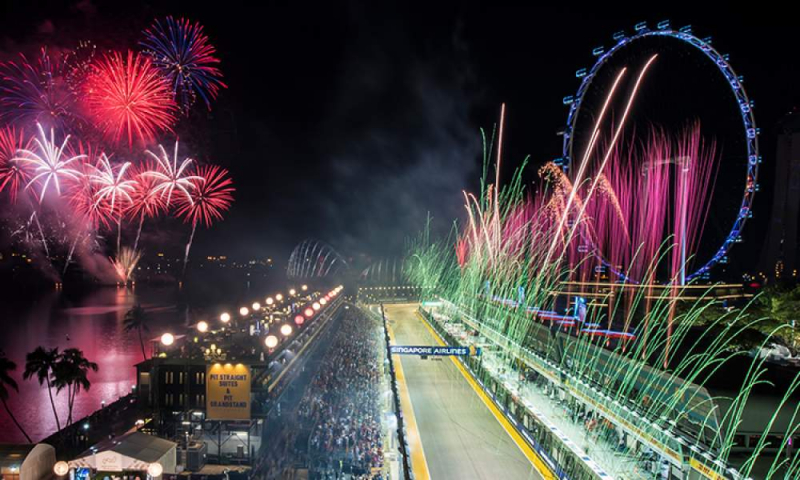
firststopsingapore.com 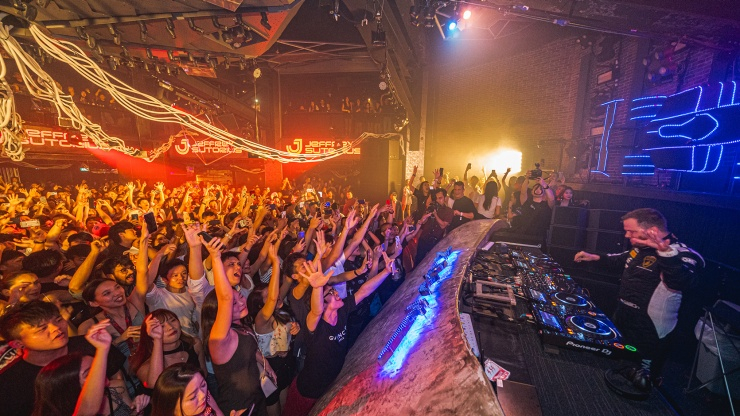
visitsingapore.com
















